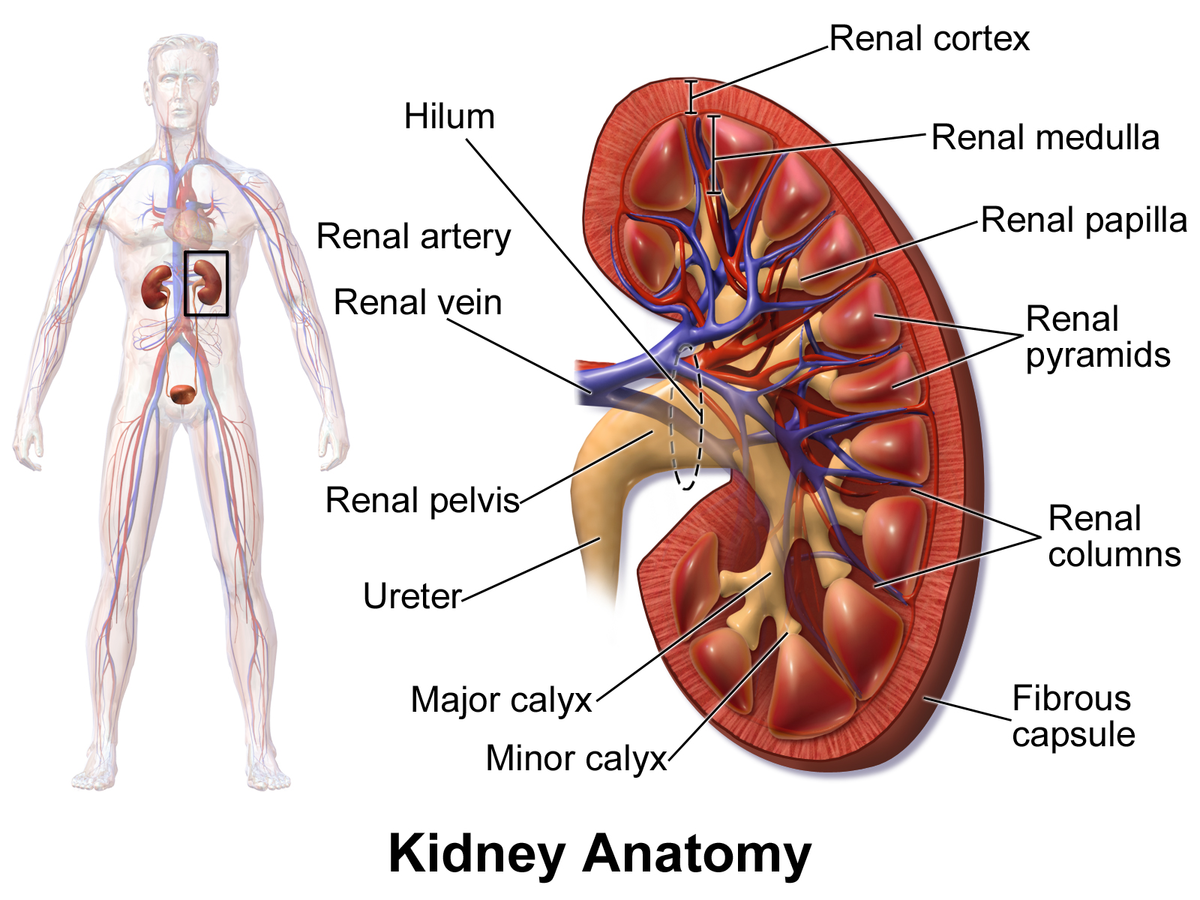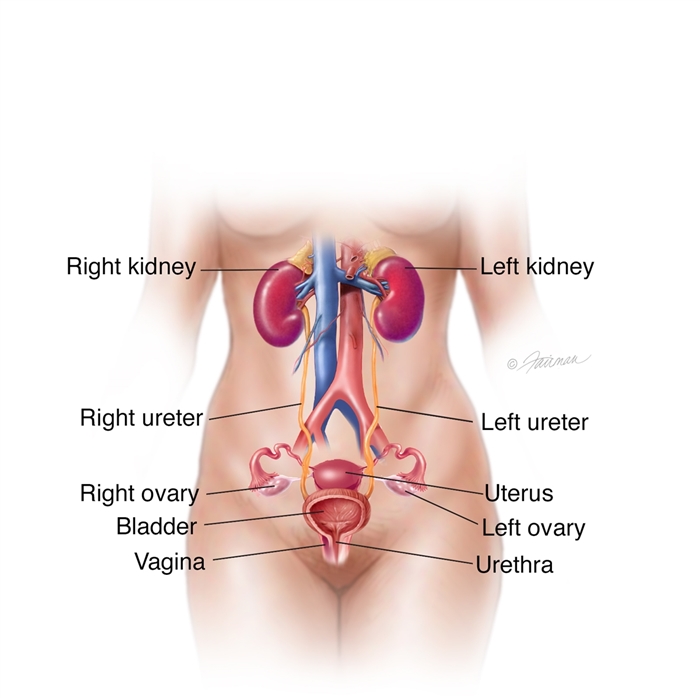गुर्दे ka prachaya /The kidneys introduction in Hindi or English
Hi Friends .
Like Shear and Comments these Post.
" The kidneys / गुर्दे "
Introduction:-
The kidneys are a couple of bean-molded organs on either side of your spine, beneath your ribs and behind your midsection. Every kidney is around 4 or 5 inches in length, generally the size of a huge clench hand.
The kidneys' responsibility is to channel your blood. They evacuate squanders, control the body's liquid equalization, and keep the correct degrees of electrolytes. The entirety of the blood in your body goes through them a few times each day.
परिचय:-
गुर्दे आपकी रीढ़ के दोनों ओर बीन-मोल्डेड अंगों के एक जोड़े होते हैं, जो आपकी पसलियों के नीचे और आपके मध्य भाग के पीछे होते हैं। हर किडनी की लंबाई 4 या 5 इंच के आसपास होती है, आम तौर पर एक विशाल क्लंच हाथ का आकार।
किडनी की जिम्मेदारी आपके रक्त को प्रसारित करना है। वे स्क्वैंडर्स को खाली करते हैं, शरीर के तरल समीकरण को नियंत्रित करते हैं, और इलेक्ट्रोलाइट्स की सही डिग्री रखते हैं। आपके शरीर में रक्त की संपूर्णता प्रत्येक दिन कुछ बार उनके माध्यम से जाती है।
गुर्दे आपकी रीढ़ के दोनों ओर बीन-मोल्डेड अंगों के एक जोड़े होते हैं, जो आपकी पसलियों के नीचे और आपके मध्य भाग के पीछे होते हैं। हर किडनी की लंबाई 4 या 5 इंच के आसपास होती है, आम तौर पर एक विशाल क्लंच हाथ का आकार।
किडनी की जिम्मेदारी आपके रक्त को प्रसारित करना है। वे स्क्वैंडर्स को खाली करते हैं, शरीर के तरल समीकरण को नियंत्रित करते हैं, और इलेक्ट्रोलाइट्स की सही डिग्री रखते हैं। आपके शरीर में रक्त की संपूर्णता प्रत्येक दिन कुछ बार उनके माध्यम से जाती है।

Keep Reading Below :-
Blood comes into the kidney, squander gets expelled, and salt, water, and minerals are balanced, if necessary. The sifted blood returns into the body. Squander gets transformed into urine, which gathers in the kidney's pelvis - a channel molded structure that channels down a cylinder called the ureter to the bladder.
Every kidney has around a million small channels called nephrons. You could have just 10% of your kidneys working, and you may not see any manifestations or issues.
On the off chance that blood quits streaming into a kidney, part or every last bit of it could kick the bucket. That can prompt kidney failure.
नीचे पढ़ते रहिए: -
रक्त गुर्दे में आता है, स्क्वैंडर निष्कासित हो जाता है, और यदि आवश्यक हो तो नमक, पानी, और खनिज संतुलित होते हैं। बहा हुआ रक्त शरीर में लौटता है। स्क्वैंडर मूत्र में तब्दील हो जाता है, जो गुर्दे की श्रोणि में इकट्ठा होता है - एक चैनल ढाला संरचना जो एक सिलेंडर को नीचे चैनल करती है जिसे मूत्राशय को मूत्रवाहिनी कहा जाता है।
हर किडनी में लगभग दस लाख छोटे चैनल होते हैं जिन्हें नेफ्रॉन कहा जाता है। आपके पास काम करने वाले आपके गुर्दे का सिर्फ 10% हिस्सा हो सकता है, और आप किसी भी अभिव्यक्तियों या मुद्दों को नहीं देख सकते हैं।
इस मौके पर कि किडनी, भाग या हर आखिरी बिट में रक्त प्रवाहित होता है, बाल्टी को लात मार सकता है। जो किडनी फेल होने का संकेत दे सकता है।
रक्त गुर्दे में आता है, स्क्वैंडर निष्कासित हो जाता है, और यदि आवश्यक हो तो नमक, पानी, और खनिज संतुलित होते हैं। बहा हुआ रक्त शरीर में लौटता है। स्क्वैंडर मूत्र में तब्दील हो जाता है, जो गुर्दे की श्रोणि में इकट्ठा होता है - एक चैनल ढाला संरचना जो एक सिलेंडर को नीचे चैनल करती है जिसे मूत्राशय को मूत्रवाहिनी कहा जाता है।
हर किडनी में लगभग दस लाख छोटे चैनल होते हैं जिन्हें नेफ्रॉन कहा जाता है। आपके पास काम करने वाले आपके गुर्दे का सिर्फ 10% हिस्सा हो सकता है, और आप किसी भी अभिव्यक्तियों या मुद्दों को नहीं देख सकते हैं।
इस मौके पर कि किडनी, भाग या हर आखिरी बिट में रक्त प्रवाहित होता है, बाल्टी को लात मार सकता है। जो किडनी फेल होने का संकेत दे सकता है।

Kidney Conditions :-
Pyelonephritis (disease of kidney pelvis): Bacteria may contaminate the kidney, for the most part causing back agony and fever. A spread of microorganisms from an untreated bladder disease is the most widely recognized cause of pyelonephritis.
Glomerulonephritis: An overactive invulnerable framework may assault the kidney, causing irritation and some harm. Blood and protein in the urine are basic issues that happen with glomerulonephritis. It can likewise bring about kidney failure.
Kidney stones (nephrolithiasis): Minerals in urine structure gems (stones), which may develop sufficiently huge to square urine stream. It's viewed as one of the most difficult conditions. Most kidney stones pass alone, however some are excessively huge and should be dealt with.
Nephrotic disorder: Damage to the kidneys causes them to spill a lot of protein into the urine. Leg expanding (edema) may be an indication.
Polycystic kidney disease: A hereditary condition bringing about huge blisters in the two kidneys that obstruct their work.
Intense renal failure (kidney failure): An abrupt compounding in how well your kidneys work. Drying out, a blockage in the urinary tract, or kidney harm can cause intense renal failure, which may be reversible.
Interminable renal failure: A changeless fractional loss of how well your kidneys work. Diabetes and hypertension are the most widely recognized causes.
End-organize renal disease (ESRD): Complete loss of kidney quality, generally because of dynamic interminable kidney disease. Individuals with ESRD require normal dialysis for endurance.
Papillary rot: Severe harm to the kidneys can cause pieces of kidney tissue to sever inside and obstruct the kidneys. On the off chance that untreated, the subsequent harm can prompt all out kidney failure.
Diabetic nephropathy: High blood sugar from diabetes logically harms the kidneys, in the end causing ceaseless kidney disease. Protein in the urine (nephrotic disorder) may likewise result.

Hypertensive nephropathy: Kidney harm caused by hypertension. Ceaseless renal failure may in the long run outcome.
Kidney disease: Renal cell carcinoma is the most widely recognized malignant growth influencing the kidney. Smoking is the most widely recognized cause of kidney malignant growth.
Interstitial nephritis: Inflammation of the connective tissue inside the kidney, frequently causing intense renal failure. Unfavorably susceptible responses and medication symptoms are the standard causes.
Insignificant change disease: A type of nephrotic disorder in which kidney cells look almost typical under the magnifying instrument. The disease can cause noteworthy leg growing (edema). Steroids are utilized to treat negligible change disease.
Nephrogenic diabetes insipidus: The kidneys lose the capacity to focus the urine, for the most part because of a medication response. In spite of the fact that it's once in a while perilous, diabetes insipidus causes steady thirst and successive pee.

Renal sore: An emptied out space in the kidney. Secluded kidney growths regularly occur as individuals age, and they almost never cause an issue. Complex sores and masses can be carcinogenic.

Comments